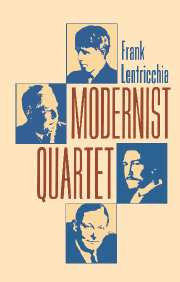4 - Wallace Stevens
Published online by Cambridge University Press: 23 November 2009
Summary
In between his time at Harvard University (1897–1900), when he published frequently in undergraduate magazines, and his move to Hartford, Connecticut, in 1916, when he was beginning to appear with regularity in the newly emerging little magazines of avant-garde writing, Wallace Stevens led a double life in New York City, with the lion's share of his waking hours spent trying (and failing) to earn a wage good enough to enable him to resume the comfortable upper-middle-class style he had been accustomed to in Reading, Pennsylvania, where he grew up, and in Cambridge, where he was supported by his father's faithful checks. In the late hours of evening during his New York years he read and occasionally wrote verses. On weekends he became the part-time exemplar of Teddy Roosevelt's ideal of the “strenuous life,” taking marathon walks in the country of twenty to thirty miles.
In the period between Harvard and his appearances in the little magazines fell his courtship of Elsie Moll. It went on for about five years, because Stevens was not about to be married until he felt himself economically secure as his father had defined economic security for him. Part of his courting of Elsie Moll involved sharing with her his passion for poetry. In a letter written to her about a year and a half before the appearance of “Sunday Morning,” his famous early poem, and with a deceptively light tone, Stevens touched upon an issue central to the course of modernism in the United States:
I sit at home o'nights. But I read very little. […]
- Type
- Chapter
- Information
- Modernist Quartet , pp. 124 - 179Publisher: Cambridge University PressPrint publication year: 1994



